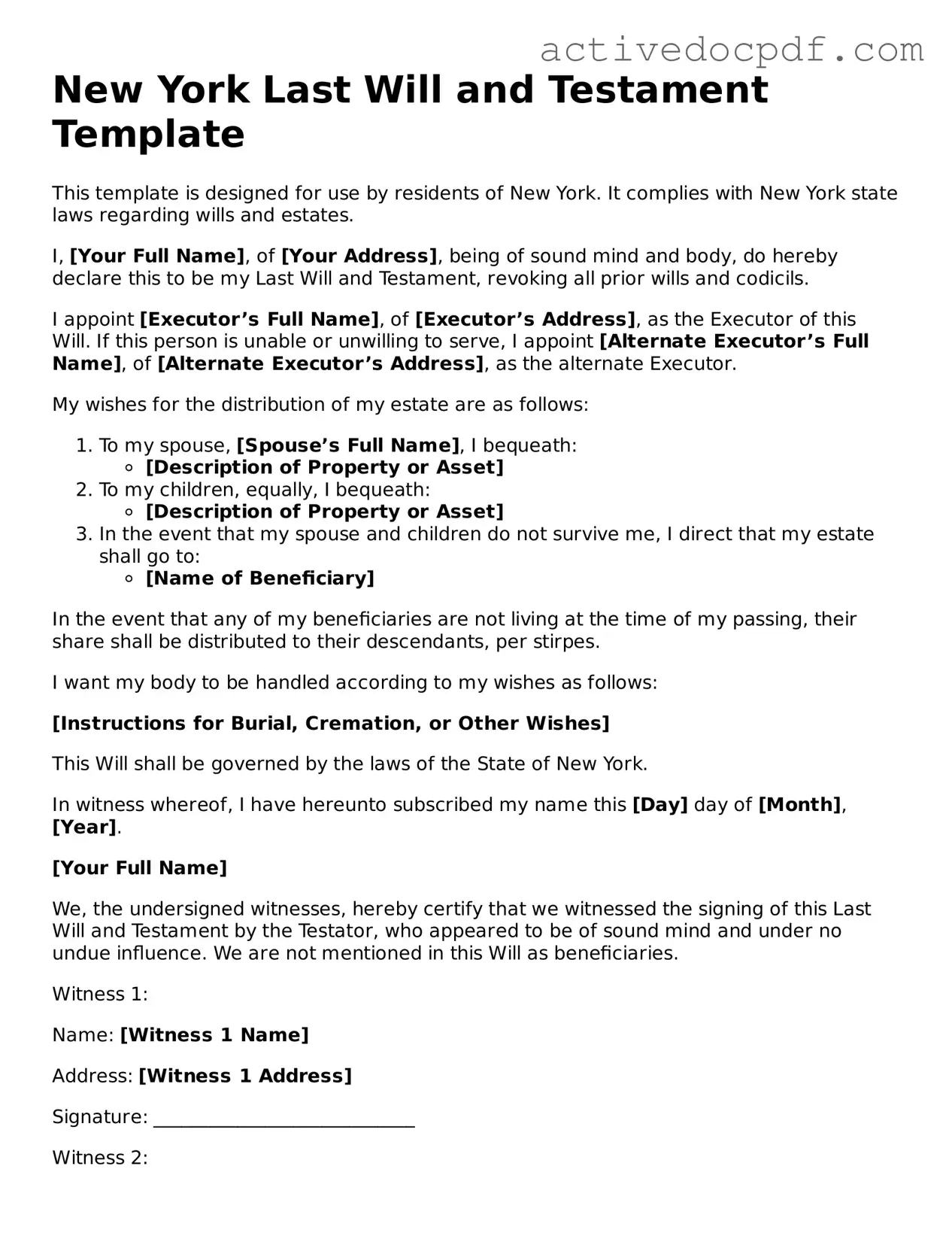Guide to Filling Out New York Last Will and Testament
After gathering the necessary information, you are ready to fill out the New York Last Will and Testament form. This document will help ensure that your wishes regarding your estate are followed after your passing. Carefully follow the steps below to complete the form accurately.
- Begin by writing your full name at the top of the form. Include your address and date of birth.
- Clearly state that this document is your Last Will and Testament.
- List your beneficiaries. These are the people or organizations who will receive your assets. Include their full names and relationships to you.
- Designate an executor. This person will be responsible for carrying out your wishes as outlined in the will. Provide their name and contact information.
- Detail your assets. Include a description of your property, bank accounts, investments, and any personal belongings you wish to bequeath.
- Specify how you want your assets distributed. Be clear about who receives what to avoid confusion later.
- Include a section for any additional wishes, such as guardianship for minor children or specific funeral arrangements.
- Sign and date the form at the end. Your signature must be witnessed by at least two individuals who are not beneficiaries.
- Have the witnesses sign the document, including their names and addresses. Make sure they understand that they are witnessing your signature.
Once you have completed the form, keep it in a safe place. It’s also wise to share its location with your executor and trusted family members. Regularly review and update your will as needed, especially after major life changes.
